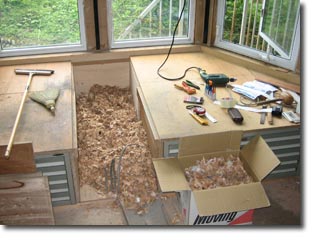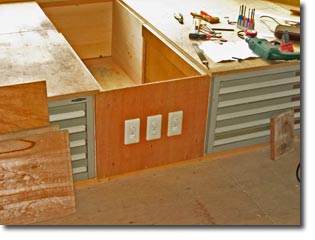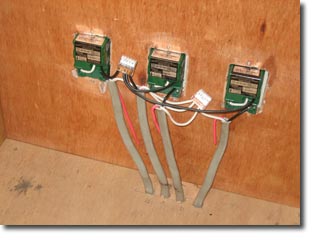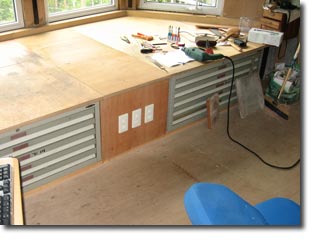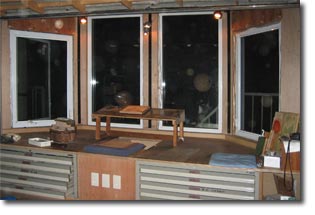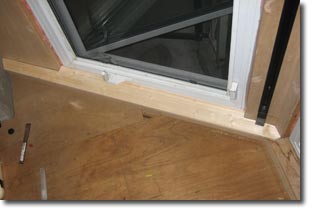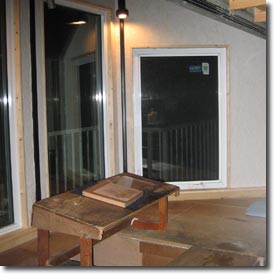Drowning in the Sea of Possibilities
Every year, as the days shorten and the weather starts to turn cooler, the turn of the season brings certain changes to the pattern of life here at the Seseragi Studio. Boots the cat certainly takes notice of the change - she has shed so much of her thick black hair during the summer that she feels it very vividly when the cool days of autumn arrive suddenly! She changes her sleeping pattern - abandoning her chair in front of the open window, and trying to huddle near me instead.
I too have my season 'switch', and of course do the usual things that everybody does - prepare warmer bedding and pull some sweaters out of the closet - but autumn also brings to me something that it may not bring to many people ... my annual drowning!
For eighteen years my printmaking work has followed a strict pattern: I make a set of prints during the year, exhibit them in January, and then make another set the following year, around and around the cycle. Some years ago, during the time I was making the long Hyakunin Isshu series, the pattern of work was set in stone for the entire ten years, but since the end of that project, I have had to start fresh each year.
 Sometimes I continued with the same theme from one year to the next - making multiple 'volumes' of my Surimono Albums for example - but recently I have produced a completely new project every year. Of course, in order to announce a new series in January, complete with custom-made case, a sensible selection of prints, and carefully thought-out details, I must start planning months earlier, and that is why as autumn deepens, my thoughts turn to the huge question I must face yet again - "what to do next year?"
Sometimes I continued with the same theme from one year to the next - making multiple 'volumes' of my Surimono Albums for example - but recently I have produced a completely new project every year. Of course, in order to announce a new series in January, complete with custom-made case, a sensible selection of prints, and carefully thought-out details, I must start planning months earlier, and that is why as autumn deepens, my thoughts turn to the huge question I must face yet again - "what to do next year?"
Why did I use the word 'drowning'? Because there are so many print projects that I would like to be able to try! As I sit in my room browsing through my library of prints and books, it is difficult to restrain myself; each time I turn a page and see another beautiful print, I think to myself "Yes, this one! That will be next!" It's a good thing that my interest lies with prints, and not with food, because if it were the pages of menus that I turned over so eagerly, I would end up so fat I wouldn't be able to get through the door!
But leafing through print albums is easy, turning those thoughts into a practical project is not. Just for example ...
- In the 1790s the publisher Tsutaya Juzaburo issued a number of illustrated books that are among the most beautiful objects ever created by man. Images from these books have occasionally been reproduced, but nobody has felt able to take on the task of creating perfect reproductions of some of these volumes. Should I try? But struggling to find the necessary superb quality wood, ordering special paper, spending the many months that it would take to carve and print each sheet, asking the collectors to wait for years until all the pages were ready to be bound into an album to be sent to them ... No, I don't dare try it ...
- Just at the dawn of the 20th century, a pair of Tokyo publishers - Matsuki Heikichi and Akiyama Buemon - competed with each other in issuing an astonishing group of albums featuring beautiful women, each containing 12 prints. The carving is delicate beyond belief, the paper is so snowy white and smooth, the pigments are of the finest purity and fineness. After making a successful Meiji reproduction in my Shiki no Bijin series, I think I might be ready to try one of these albums. But again, each print would take me many months, trying to find adequate supplies would be endlessly frustrating, and after three or four years of work I might be able to sell a few copies of the completed album. No, I don't dare try it ...
- Surimono ... Oh, there are so many incredibly beautiful surimono prints in the world's museum collections! And how few of them I have yet reproduced in my albums! But during the five years of my Surimono Albums, even as the print quality improved year by year, subscriptions gradually dropped off ...
So even though I am daily buried in work on the current print projects - the Kaigetsudo Scroll and the Small Print Collection - I keep returning to my shelves to try and find an answer to that question constantly in my mind: what kind of project can I put together for next year that will fit the requirements: provide me with a worthwhile challenge, be interesting to potential collectors, be economically feasible (adequate income for me, yet not too expensive for the collectors), and, what is perhaps most important - be something worth doing?
It is indeed a difficult puzzle. Will I find a solution again this year? We'll all find out in January!




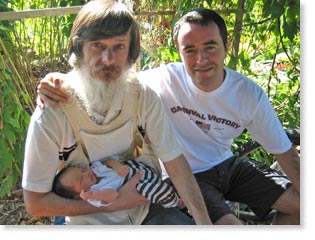 The first picture here is with proud father Ioan, who allowed me to take over his 'job' for a couple of hours! It was a very nostalgic moment for me when I put on that baby carrier - it's the same one with which I carried Himi in the first weeks after she was born! I had walked around the garden earlier that day carrying the baby in the carrier, with just the top of his head visible, and had found it very difficult to believe that only 23 years have passed since it was little Himi who I was carrying that way ...
The first picture here is with proud father Ioan, who allowed me to take over his 'job' for a couple of hours! It was a very nostalgic moment for me when I put on that baby carrier - it's the same one with which I carried Himi in the first weeks after she was born! I had walked around the garden earlier that day carrying the baby in the carrier, with just the top of his head visible, and had found it very difficult to believe that only 23 years have passed since it was little Himi who I was carrying that way ... As you can see from this snapshot on the right, little Alex is certainly having no chance to get 'lonely' these days. Although I imagine my mother isn't too happy to think of herself as a 'great-grandma', I suppose that is mitigated somewhat by the pleasure she gets from her time with the new baby (that's 'great-aunt' Sherry helping with the tickling chores ...).
As you can see from this snapshot on the right, little Alex is certainly having no chance to get 'lonely' these days. Although I imagine my mother isn't too happy to think of herself as a 'great-grandma', I suppose that is mitigated somewhat by the pleasure she gets from her time with the new baby (that's 'great-aunt' Sherry helping with the tickling chores ...).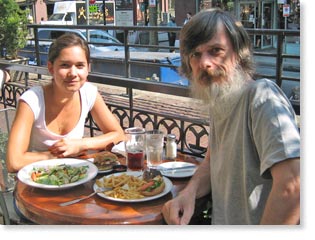

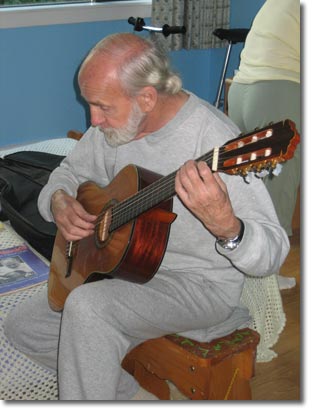
 Sometimes I continued with the same theme from one year to the next - making multiple 'volumes' of my
Sometimes I continued with the same theme from one year to the next - making multiple 'volumes' of my  This is the print version of the stories published on my 'A Story A Week' website during the first half of this year. Why should only people who use a computer have all the fun! The complete text of the 26 stories issued from January through June is included, and each story is accompanied by a short vocabulary in Japanese containing some of the more difficult words and phrases.
This is the print version of the stories published on my 'A Story A Week' website during the first half of this year. Why should only people who use a computer have all the fun! The complete text of the 26 stories issued from January through June is included, and each story is accompanied by a short vocabulary in Japanese containing some of the more difficult words and phrases. This is a colouring book that uses images from my well-known Hyakunin Isshu poetry series. Japanese readers know that colouring for adults has become a huge boom in Japan recently, and these images make a perfect theme for this!
This is a colouring book that uses images from my well-known Hyakunin Isshu poetry series. Japanese readers know that colouring for adults has become a huge boom in Japan recently, and these images make a perfect theme for this! These are the first two in what I hope will become an extended series of eBook reprints of classic books on the techniques of creating Japanese woodblock prints. I have arranged and edited the entire text of books which have fallen into the public domain - but which are very scarce and difficult to find - and created electronically-readable editions. (Note that there is no paper copy of these eBooks - you need a computer or eBook reader in order to view them. )
These are the first two in what I hope will become an extended series of eBook reprints of classic books on the techniques of creating Japanese woodblock prints. I have arranged and edited the entire text of books which have fallen into the public domain - but which are very scarce and difficult to find - and created electronically-readable editions. (Note that there is no paper copy of these eBooks - you need a computer or eBook reader in order to view them. )
